Certain types of horse hay are more popular in specific areas because locally grown hay is often much more affordable and easier to come by. There are likely more types of horse hay that you may be unfamiliar with because of this.
It is important to know about the many types of horse hay that are available to you and how healthy they are for your horse, even if they are not popular in your area.
When local hay becomes hard to find, you may have to look further out and settle for other types of horse hay than what you are used to.
Table of Contents
15 Types of Horse Hay
There are many types of quality horse hay available in the United States. The following are fifteen types of horse hay that you can find in various areas across the country.
Orchard Grass
Orchard grass hay is a staple among horse hays, and most horses absolutely love it. This type of hay has a protein content of 10% to 12% and a high-calorie content.
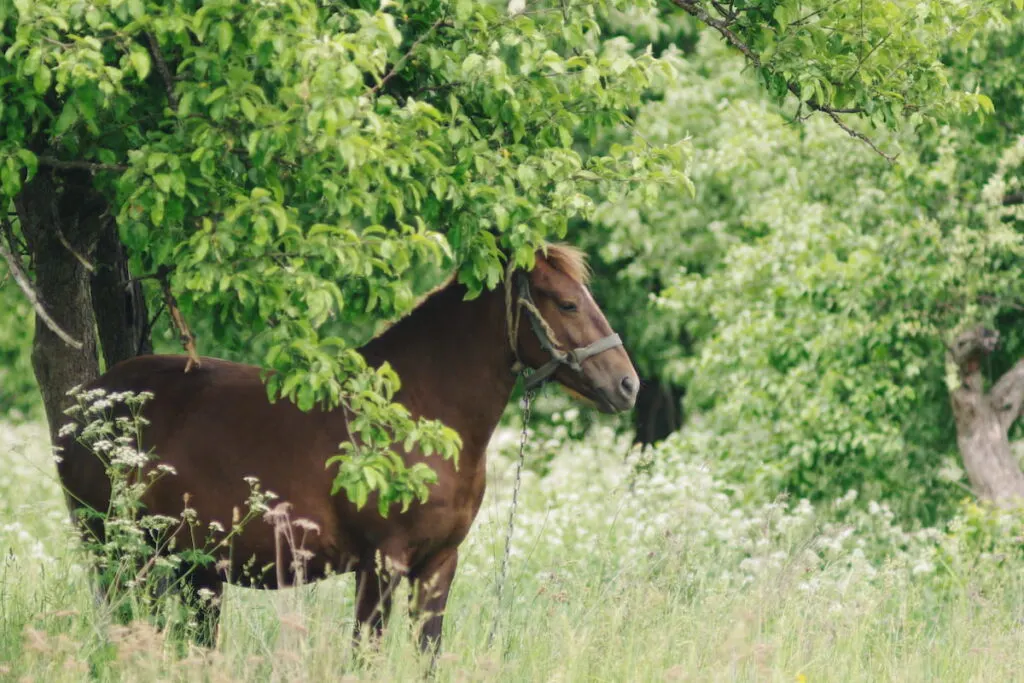
Orchard grass hay is typically a softer hay that is normally easy to find thanks to the hardiness of orchard grass and its growth rate.
With this type of hay, most horse owners will find that their horses need less grain to maintain their weight than other hay types.
Oat Grass Hay
Oat grass hay is another good choice for most horses, even those that do not fare well on oat grain food.
Oat hay has about 9% crude protein.
Oat hay features more vitamin A than other hays. And while it is low in potassium, it is still not safe for horses with hyperkalemic periodic paralysis, HYPP.
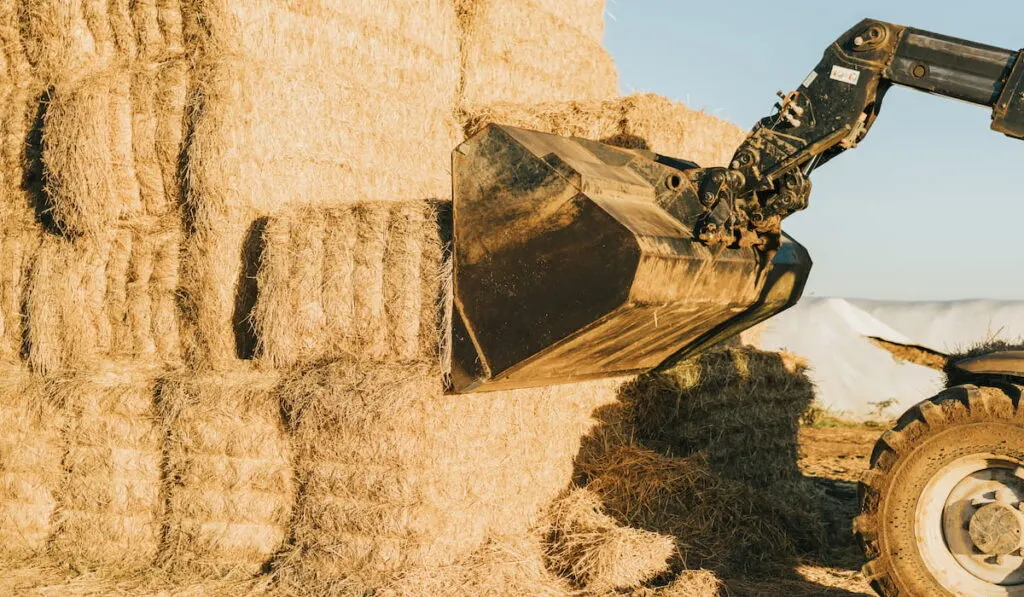
Oat hay lacks copper, which is essential for a horse’s health, so horse owners may need to supplement with minerals or other mineral-rich hays.
Timothy Grass Hay
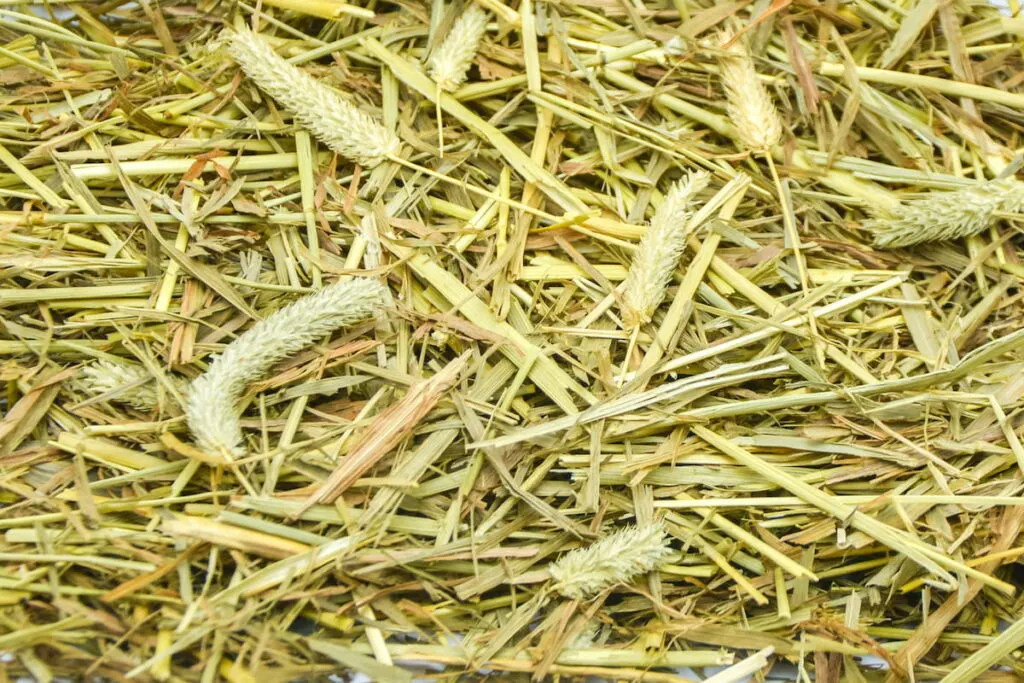
Timothy grass hay is another popular type of hay that horse owners prefer, thanks to its long heritage among equestrians.
Timothy grass hay has a moderate amount of protein, about 8%.
Timothy hay is sometimes harder to find during certain parts of the year and in different parts of the country, as it needs an ample water supply to grow.
Timothy grass grows best in the Upper Midwest as well as the northeastern parts of the United States.
Alfalfa Hay
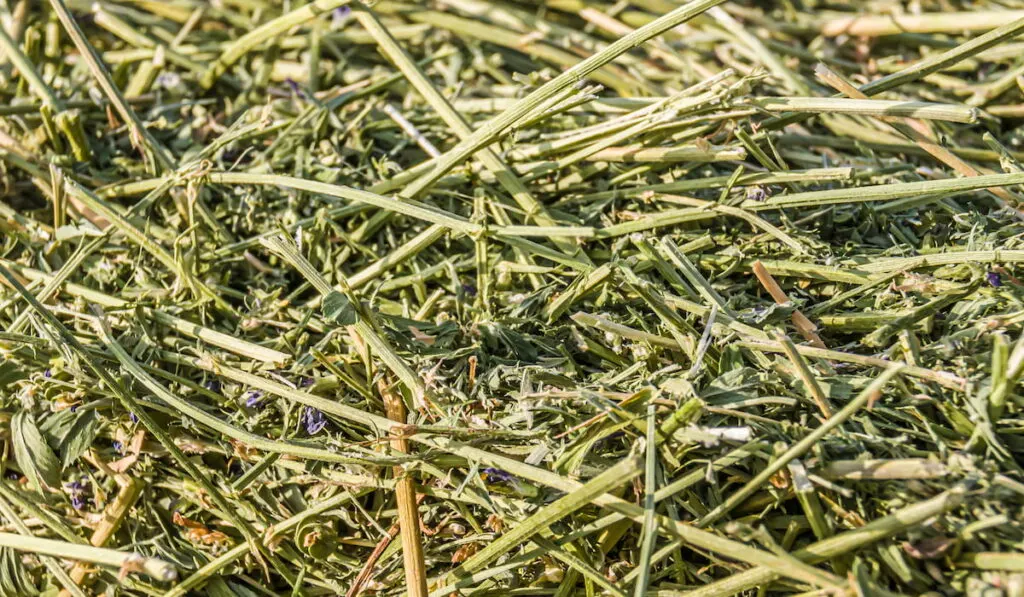
Alfalfa is a legume, not a grass, and it grows across the country.
Alfalfa hay is a rich, nutrient-filled hay that may cause issues for some horses.
Alfalfa contains about 17% to 20% crude protein.
Alfalfa hay is a favorite among equestrians that need to put weight on their horses and those that have horses that suffer from equine metabolic syndrome.
It is not ideal for horses that are overweight, horses that suffer from hyperkalemic periodic paralysis, HYPP, or those that live in extremely hot areas.
Coastal Hay
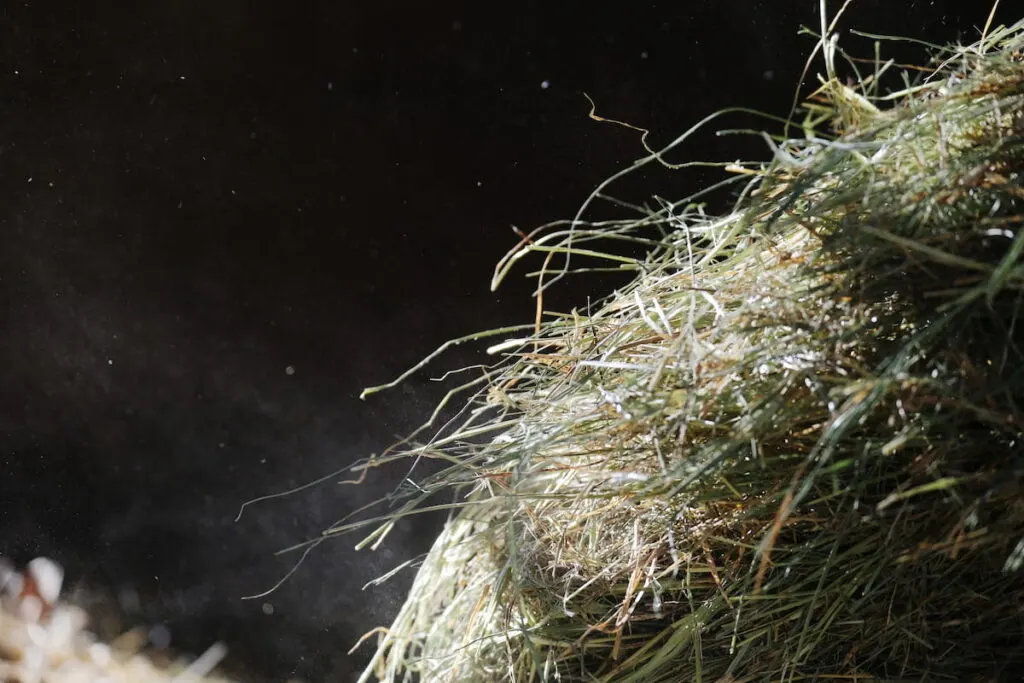
Coastal hay is a variety of Bermuda grass, and it is a popular type of hay found in the southern states, especially in the eastern part of the country.
If harvested correctly, this hay will be very healthy for horses, but coastal hay that is harvested too late will become too fibrous.
Coastal hay is great for horses that suffer from laminitis.
Unfortunately, this type of hay can cause dry manure, so be sure to keep an eye out for that.
Coastal hay features less crude protein than others, only about 5%. If you need a high protein hay for your horse, coastal grass hay may not be ideal.
Tifton 85
Tifton 85 is a type of horse hay that combines a South African grass with Tifton 68, another variety of Bermuda grass. It is said to be easier for horses to digest than other Bermuda grass varieties.
Tifton 85 features a protein content of about 12% to 13%.
Since Tifton 85 hay is easy to digest and has a moderate crude protein content, it is a fantastic horse hay option – if you are lucky enough to find it in your area.
Jiggs Hay
Jiggs hay is another Bermuda grass variety, but it is similar to coastal Bermuda grass, and it is a good hay for horses.
Jiggs hay grows more easily than other varieties in soil that is not well-drained.
Jiggs hay features a solid crude protein content of about 13%.
The high protein content means it is a great hay option for most horses, including those that are a little more active than others.
Clover Hay
Clover hay is a type of legume that horses can and love to eat, but it is not a super common horse hay. Clover itself is difficult to cut and bale, so many hay producers chose other legumes or grasses instead.
It is also difficult to prevent mold in clover hay, due to its naturally high moisture content.
When produced and stored correctly, the protein content of clover hay is about 18%.
Ignore any extra saliva on your horse’s mouth when they consume this hay; it is not dangerous, just a natural side effect of eating clover.
Barley Hay
Barley hay is another horse hay option containing about 9% crude protein. This hay rates about the same as timothy hay when it comes to nutrients.
The important thing to know about barley hay is that it should be green, which is when the awns, or tops, of the barley haven’t finished growing.
If barley hay is still green, that means it is soft and will not cause injury to your horse’s mouth.
If the barley hay isn’t green and the awns are hard, it is not safe for horses to eat.
Barley is a great horse hay option when your preferred hay is hard to find or if you plan to mix it with some alfalfa for a little extra protein.
Bromegrass Hay
Bromegrass hay is yet another horse hay option that many horses love. It is tasty, easy to eat, and offers horses about 8% protein.
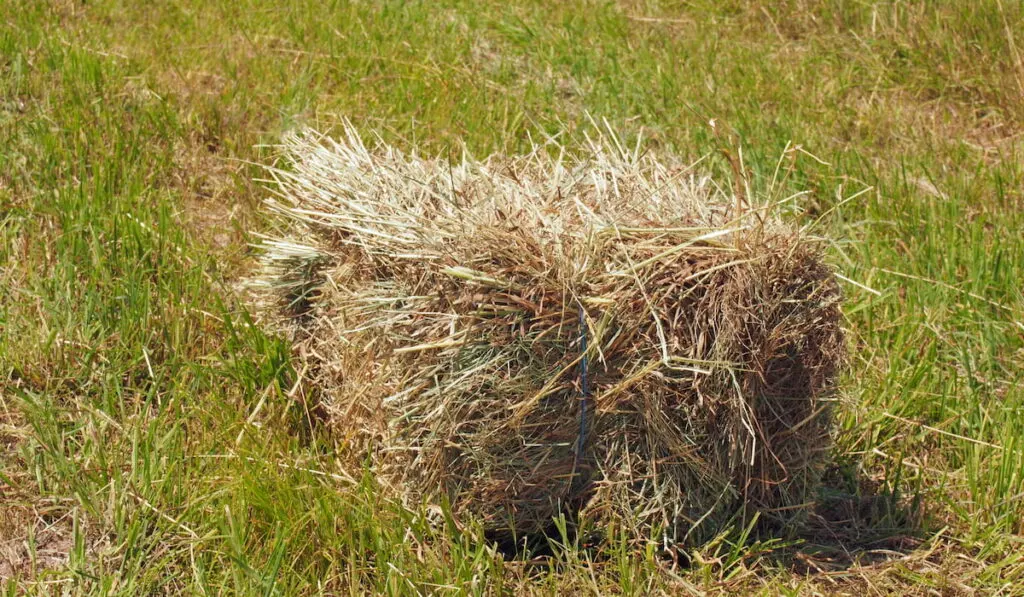
Bromegrass hay is great for horses that have limited to moderate daily activity; it is not ideal for very active horses.
It makes a great addition to high protein hays like alfalfa or clover, and it is not likely to cause impacted bowels.
Kentucky Bluegrass
Kentucky bluegrass hay is rare to see, but it is another great horse hay option. This grass does not tend to yield an ample amount of hay, so most hay farmers opt for other grasses or legumes.
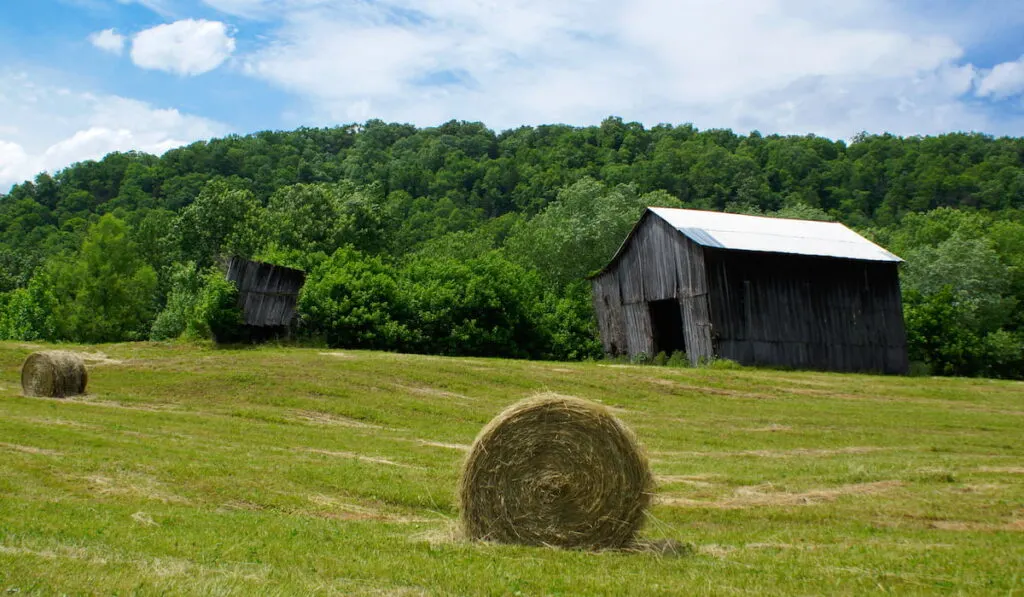
Kentucky bluegrass is, of course, most commonly found in the state of Kentucky, but you can find it in other areas like Idaho, Oregon, and even Washington state.
The protein content for Kentucky bluegrass hay comes in around 12%, although it is sometimes higher.
Hay Mixtures
Mixing different types of hay together can improve the protein and mineral content dramatically.
Alfalfa-Bermuda Grass Hay
Alfalfa-Bermuda grass is one type of mixed hay that horse owners love to use. This mixture combines the high protein and nutritional content of alfalfa with the nutrient-lacking Bermuda grass.
The resulting hay is the perfect combination for most horses, once horse owners figure out the correct combination. The crude protein in this mix should be exceptional due to the alfalfa.
Alfalfa-Oat Mix
Alfalfa-oat hay is another mixed hay that equestrians feed their horses.
Since oat hay only contains about 9% crude protein, mixing it with alfalfa will increase the protein levels noticeably.
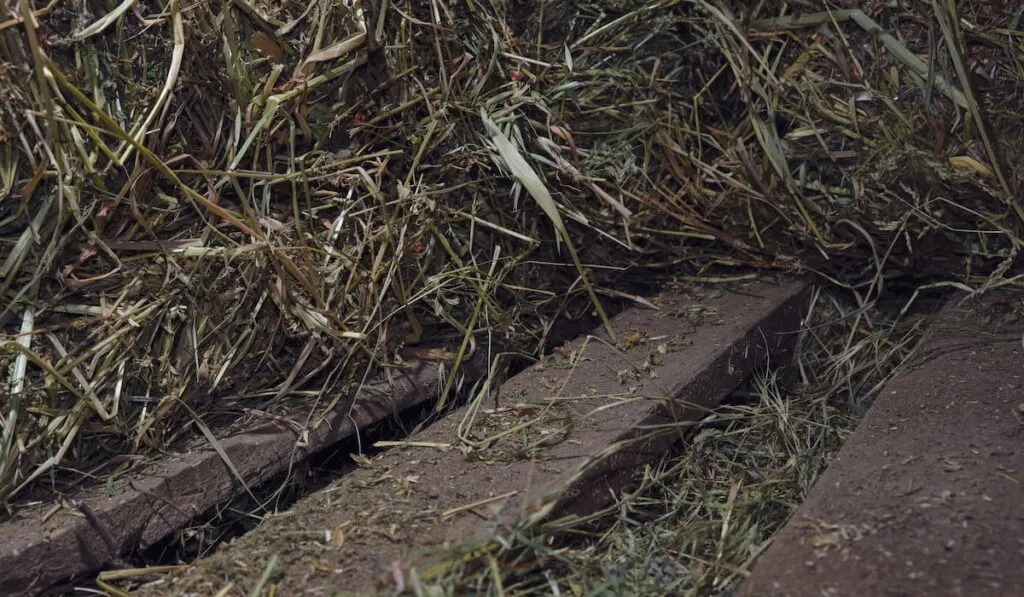
Unfortunately, even with this combination of hays, the copper content of this mixture is still lacking. Horse owners will likely need to add a copper supplement to their horse’s diet if they opt for this hay mix.
The exact protein content of alfalfa-oat hay varies, but it will be rather high thanks to the alfalfa.
Orchard Grass-Alfalfa Mix
Another great horse hay mix is orchard grass and alfalfa, especially for active horses that need extra energy. It is also ideal for horses that are pregnant, with a foal, or that need to gain weight or muscle.
Since orchard grass only has around 10% to 12% crude protein, it makes a great addition to alfalfa.
Combined, these two hays create a hay mix that is high in protein and very palatable for horses.
3-Way Hay: Alfalfa-Oat-Bermuda
If two different types of hay are not enough, there is another option. Horse owners can opt for 3-way hay that contains alfalfa, oat grass, and Bermuda grass.
Oat and Bermuda hay are both lacking in the protein department, but when you mix it with alfalfa, you resolve that issue automatically.
The protein content of this mix can vary depending on the proportions of each type of hay, but you can expect it to be high thanks to alfalfa.
The Protein Content of the 11 Basic Types of Hay
| Type of Hay | Legume or Grass | Protein Content |
| Orchard | Grass | 10% – 12% |
| Oat | Grass | 9% |
| Timothy | Grass | 8% |
| Alfalfa | Legume | 17% – 20% |
| Coastal Bermuda | Grass | 5% |
| Tifton 85 | Grass | 12% – 13% |
| Jiggs | Grass | 13% |
| Clover | Legume | 18% |
| Barley | Grass | 9% |
| Bromegrass | Grass | 8% |
| Kentucky Bluegrass | Grass | 12% |
Common Hay Forms
Hay producers sell hay in several forms. You can choose from one or more of the following, although each form may not be available in your area.
Standard Square Bales
Standard square bales are the most common hay form that horse owners will purchase.
The quality, long-stemmed hay is baled into small, standard-size square or rectangular-shaped squares.
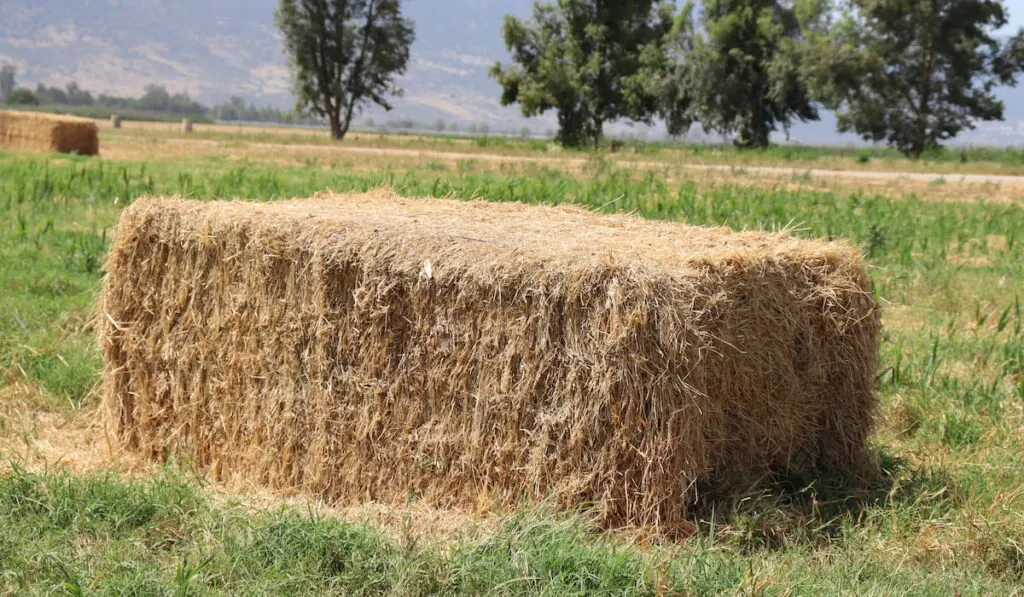
Square bales usually weigh between 50 and 100 pounds, depending on the seller. It is easy to store in barns, easy to transport, and easy to feed.
Round Bales
Round bales are large, round bales of long-stemmed hay that are sold to horse owners who intend to feed several horses at a time.
Round bales are ideal for pasture feeding; however, it is important to verify that it has not been rained on since it was baled.
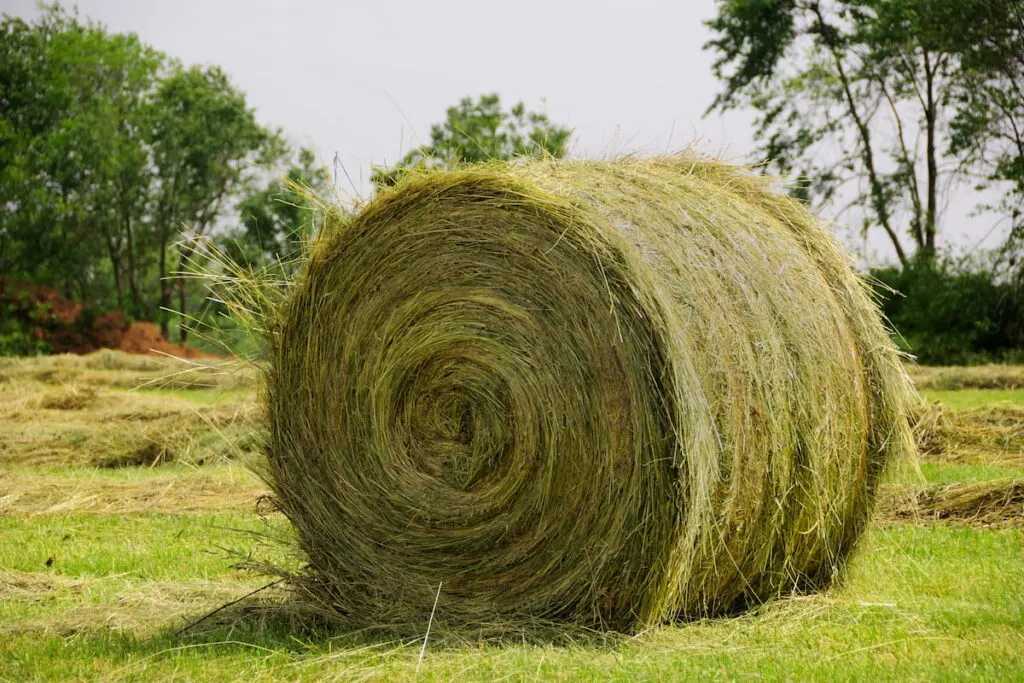
These bales can range in size from 4×4 feet, 5×5 feet, or 5×6 feet depending on the farm that baled them. Horse owners will need a tractor and a hay spear to move round bales on their farm.
Cubes (Wafered)
Some forms of hay are sold in small cubes, like alfalfa. These cubes are about 3×3 centimeters. The hay is cut into small pieces and pressed together into the shape of the cube.
Most horses love to eat hay cubes and horse owners often prefer them because they are easy to store as well as weigh.
These are a great option if baled hay is hard to find or if your horse tends to waste a lot of their hay when eating.
Pellets
Horse hay is also sold in pellets and while it may seem like an odd choice, hay pellets are preferred by some horses.
Pellets are just as good as regular hay and easier for some horses to eat, especially senior horses and those with mouth issues.
Like cubes, pellets are harder to waste, and it is easy to weigh. Storage is much simpler as pellets can be stored in large containers.
Large Square Bales
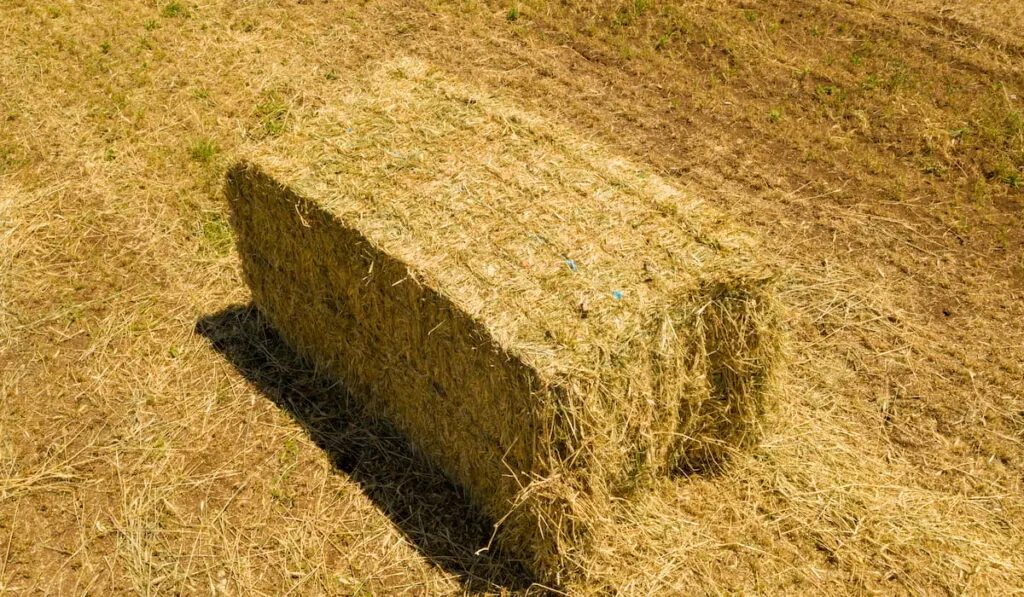
Occasionally, horse hay is sold in very large square bales weighing between 1,000 and 2,000 pounds. Most horse owners order these bales by the trailer load to save money.
These large square bales can be difficult to move thanks to their large size, but they will offer plenty of feedings for your horses.
They may appear to cost more upfront, but in the end they are usually cheaper than smaller square bales or even round bales.
How Do You Know Which Type of Hay Will Work for Your Horse?
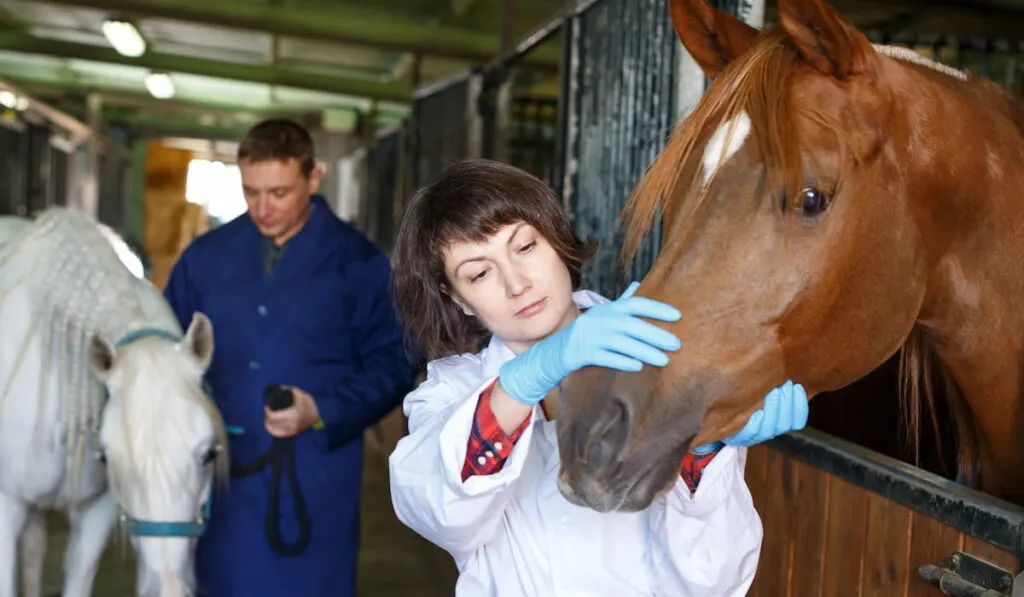
The best way to find out what type of hay will work best for your horse is by trial and error along with a veterinarian’s assistance.
A vet will be able to tell you what your horse’s protein needs are and which types of hay you should choose from.
Of course, not all types of hay are available in each form depending on your location. However, no matter where you are, you should be able to find a hay that is ideal for your horse.
Things to Keep in Mind
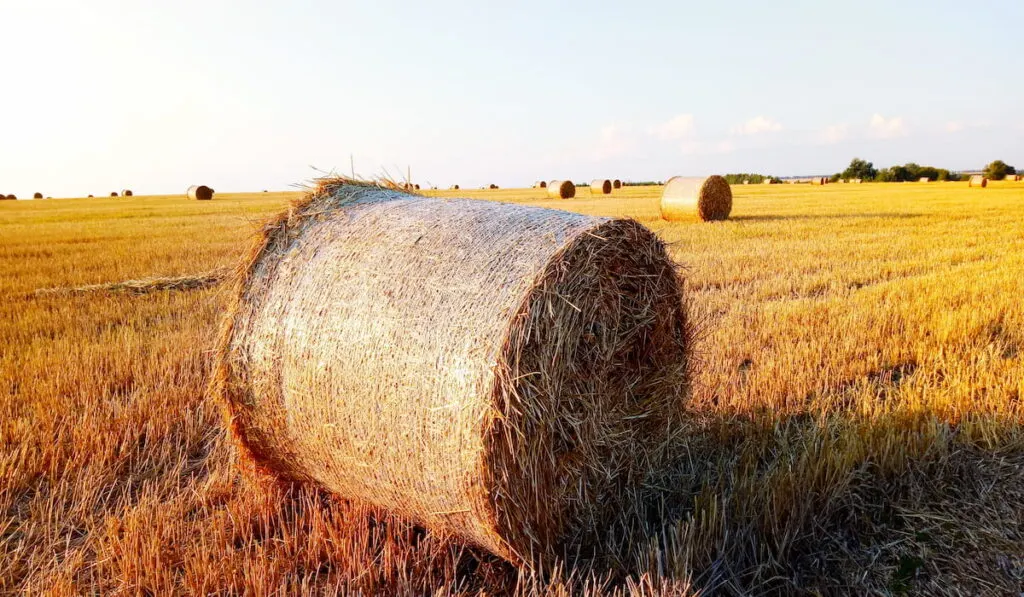
When it comes to horses, it is imperative that you know how well the hay has been cared for before and after it made its way to your farm.
- Horse Hay Should Never Get Wet
You should make sure that your extra horse hay does not get wet and that there is plenty of air flow. Hay bales or cubed hay should be covered and off the ground while in storage.
- Horse Hay Should Not Be Moldy
The reason you must keep stored horse hay dry and free of moisture is to prevent mold. You should never feed moldy hay to your horse.
- Hay Is Essential to a Horse’s Diet
Hay is forage and a form of fiber that horses need to keep their digestive systems working properly. Hay is a necessity, choosing which one works for your horse is up to you.
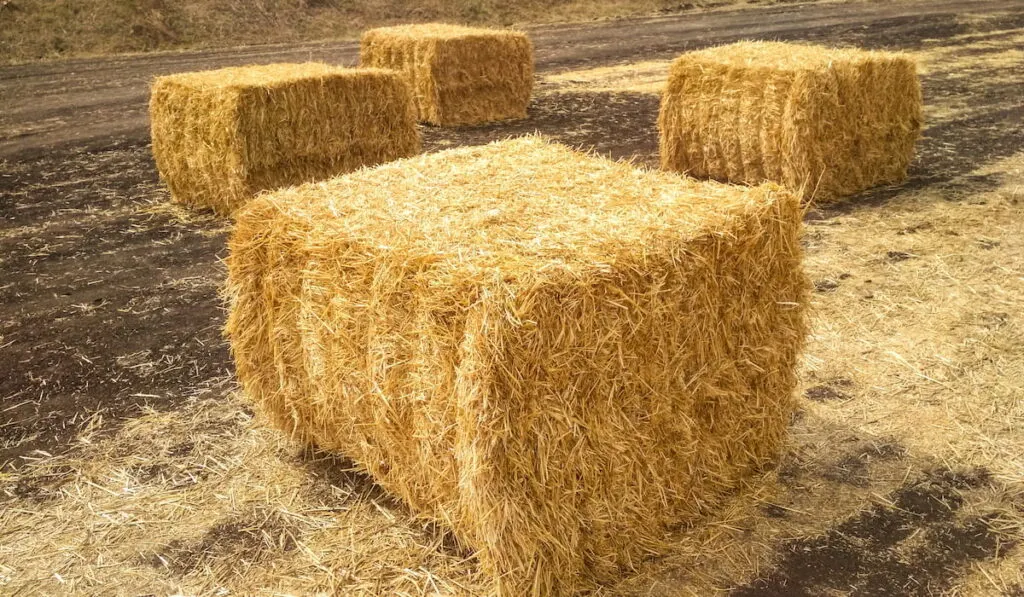
Final Thoughts
Every horse is different, so the type of hay that works for one horse may not work for another. Some horses simply prefer certain hays over others. The important thing is to always be aware that several types of excellent horse hay exist, you just need to find the right one for your horse.
Resources
- https://ker.com/equinews/coastal-bermudagrass-horses/
- https://ker.com/equinews/orchardgrass-hay-horses/
- https://thehorse.com/18749/the-grass-guide-orchardgrass/
- https://www.standleeforage.com/nutrition/nutritional-papers/big-two-forage-grasses-timothy-and-orchard/
- https://extension.psu.edu/timothy
- https://thehorse.com/110110/all-about-alfalfa/
- http://www2.ca.uky.edu/agcomm/pubs/agr/agr134/agr134.htm
- https://trawinseeds.ca/wp-content/uploads/2018/09/Forage-Factsheet
- https://horses.extension.org/how-much-alfalfa-hay-do-you-feed-a-1200-pound-horse-and-how-often/
- https://madbarn.com/feeds/hay-bermuda-5-cp-80-ndf/
- https://www.standleeforage.com/standlee-barn-bulletin/benefits-of-oat-grass-hay-for-horses/
- https://equisearch.com/articles/oat-hay-needs-a-partner/
- https://madbarn.com/feeds/hay-barley-9-cp-57-ndf/
- https://equimed.com/health-centers/nutrition/articles/pros-and-cons-of-feeding-grain-hays-to-your-horse
- https://www.jambackfarms.com/smooth-bromegrass
- https://agrilife.org/agnewsandviews/2018/05/07/what-is-coastal-tifton-85-and-jiggs/
- http://www.secattleadvisor.com/2014/08/01/stockpiled-tifton-85-bermudagrass-for-lactating-cows/
- https://animal.ifas.ufl.edu/beef_extension/bcsc/2012/pdf/vendramini.pdf
- https://www.myhorseuniversity.com/single-post/2017/09/25/what-you-need-to-know-about-horse-hay
- https://proequinegrooms.com/tips/barn-management/what-you-should-know-about-hay-pellets/
- https://www.deephollowranch.com/best-hay-types-for-horses/
- https://www.hpj.com/livestock/are-clovers-good-for-horse-pasture-and-hay/a
- https://stablemanagement.com/articles/comparing-types-of-hay-bales-for-horses/
- https://www.agtradegroup.com/blog/archive/202006/90-world%E2%80%99s-supply-kentucky-bluegrass-grown-pacific-northwest

